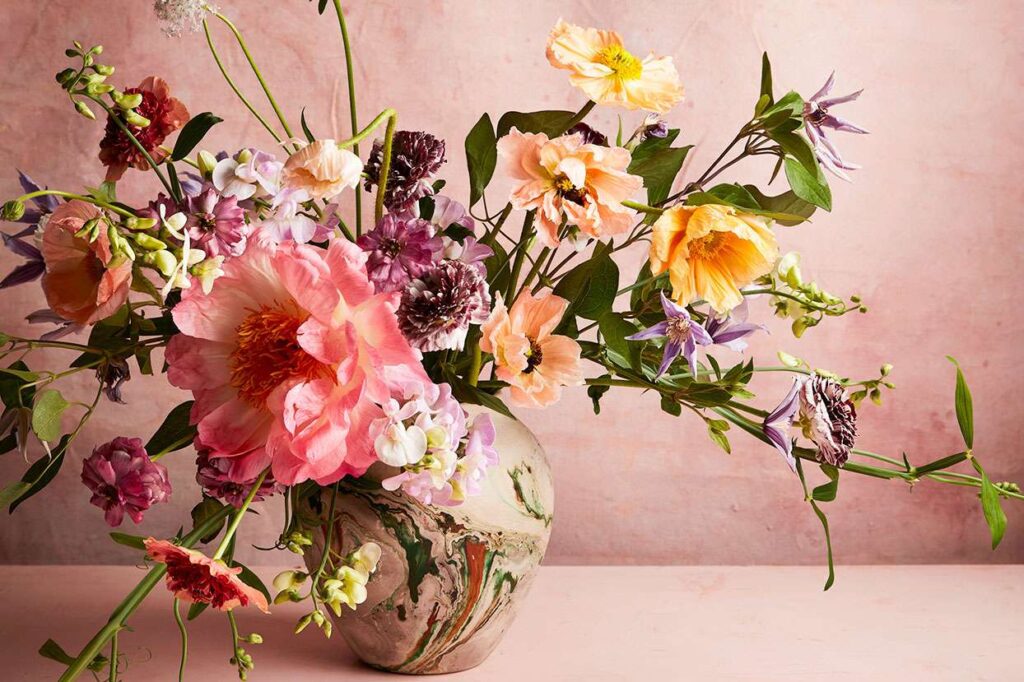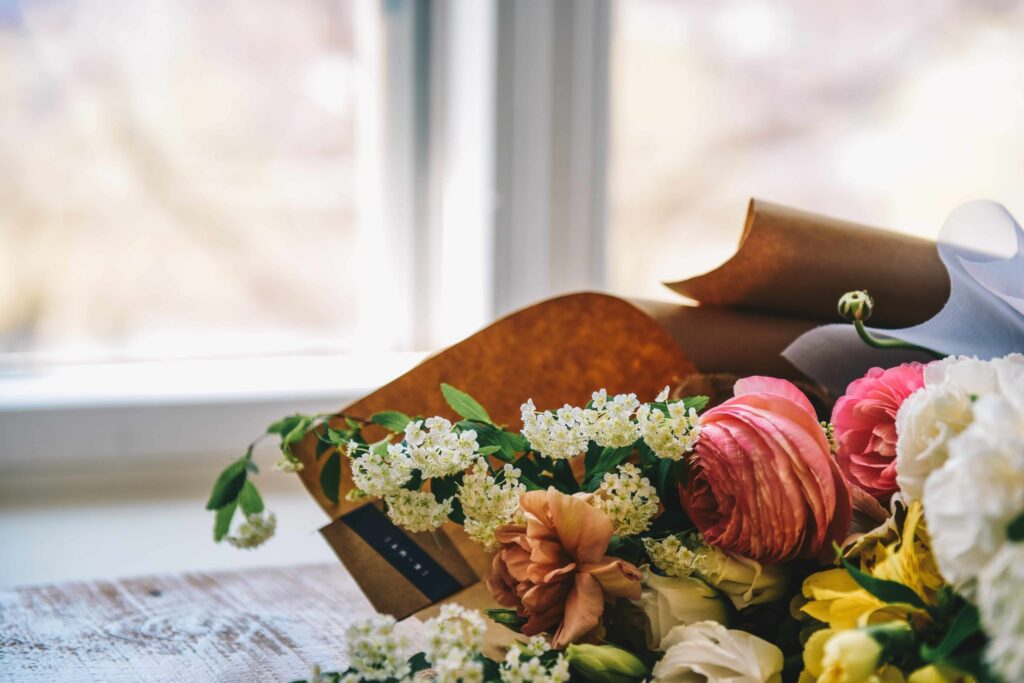Flowers have long been used to express emotions and convey messages. When it comes to funerals, the choice of flowers for the bouquet takes on an even deeper meaning. In this article, we will explore the symbolism of flowers, steps to design a funeral bouquet, personalization ideas, preserving techniques, and etiquette when it comes to funeral flowers. By understanding these aspects, you can create a truly meaningful and heartfelt funeral bouquet.
Understanding the Symbolism of Flowers
Flowers have been associated with symbolism for centuries, and each flower has a unique meaning. When choosing flowers for a funeral bouquet, it is essential to select ones that honor and represent the deceased. By incorporating flowers that hold significance to their personality or life, you can create a memorial tribute that reflects their spirit and touches the hearts of those attending the funeral.

The Language of Flowers in Mourning
In the Victorian era, the practice of using the language of flowers to convey emotions was popularized. Different flowers and arrangements carried specific meanings. For example, lilies symbolize purity and innocence, making them a common choice for funeral bouquets. Roses, particularly red ones, symbolize love and respect. By understanding these symbolic meanings, you can create a bouquet that not only looks beautiful but also carries a message that resonates with those in mourning.
Choosing Flowers That Represent the Deceased
When selecting flowers for a funeral bouquet, consider the deceased’s favorite flowers or those that had special meaning to them. Perhaps they had a particular fondness for sunflowers, which symbolize adoration and loyalty. Alternatively, maybe they had a favorite color, and you can incorporate flowers in that shade. By choosing flowers that hold a personal connection, you can create a bouquet that celebrates their life and brings comfort to the mourners.
Furthermore, it is worth noting that certain flowers have regional or cultural significance. For instance, in Asian cultures, the chrysanthemum is often associated with funerals and is considered a symbol of death and mourning. In contrast, in some Latin American countries, marigolds are commonly used in funeral arrangements as they are believed to guide the souls of the departed back to their loved ones.
Another aspect to consider when selecting flowers for a funeral bouquet is the season. Different flowers bloom at different times of the year, and incorporating seasonal blooms can add a touch of natural beauty and authenticity to the arrangement. Spring flowers such as tulips and daffodils symbolize renewal and rebirth, while winter flowers like poinsettias can evoke a sense of warmth and comfort during the colder months. Read about Flowering Plants & Their Pollinators at https://learn.genetics.utah.edu/content/flowers/https://learn.genetics.utah.edu/content/flowers/
Steps to Designing a Funeral Bouquet
Designing a funeral bouquet involves careful thought and consideration. It is essential to select the right flowers and arrange them in a way that evokes the desired emotional impact.
Funeral bouquets have a long-standing tradition of honoring the deceased and offering comfort to the bereaved. The choice of flowers and their arrangement can speak volumes about the life that was lived and the love that endures.
Selecting the Right Flowers
When selecting flowers for a funeral bouquet, opt for blooms that are sturdy and long-lasting. Flowers such as chrysanthemums, carnations, and gladioli are popular choices due to their durability and symbolism of remembrance. Additionally, consider incorporating evergreen foliage to add a touch of elegance and longevity to the bouquet.
Each flower carries its own significance and meaning, allowing for a personalized touch in the bouquet. For example, lilies are often associated with purity and the restoration of innocence, making them a poignant choice for honoring a loved one’s memory.
Arranging Flowers for Emotional Impact
The arrangement of flowers plays a significant role in conveying emotions and setting the tone for the funeral. Consider using a mix of textures and colors to create visual interest. For example, combining delicate baby’s breath with bold roses can create a contrast that represents the beauty and fragility of life. Arranging flowers in a cascading style can symbolize the journey from life to afterlife. Experiment with different arrangements to find one that resonates with the emotions you wish to convey.
Flowers have a language of their own, speaking volumes without uttering a word. The placement of each bloom and the overall shape of the bouquet can evoke feelings of peace, love, and remembrance. By carefully considering every petal and leaf, a funeral bouquet can become a heartfelt tribute that honors the life of the departed.
Personalizing Your Funeral Bouquet
Adding personal touches to a funeral bouquet can make it even more meaningful and unique. By incorporating elements that reflect the deceased’s life or personality, you create a tribute that speaks directly to their memory.
When personalizing a funeral bouquet, it’s essential to delve into the individual’s passions and interests. For example, if the deceased had a love for gardening, incorporating their favorite flowers or plants can serve as a beautiful homage. Similarly, if they were known for their vibrant personality, opting for bold and colorful blooms can capture their spirit in a tangible way.
Incorporating Personal Touches
Consider adding small tokens of remembrance to the bouquet, such as a photo, a piece of jewelry, or a memento that holds special significance. You can also include handwritten notes or quotes that were meaningful to the deceased. These personal touches can bring comfort to the mourners and create a sense of connection to their loved one.
Furthermore, integrating elements that showcase the individual’s accomplishments or hobbies can add layers of depth to the bouquet. For instance, if the deceased was an avid traveler, incorporating a small globe or map-themed ribbon can symbolize their adventurous spirit and worldly experiences.
Using Color to Convey Emotion
The color palette of the funeral bouquet can evoke different emotions and set the overall mood. While white flowers are often associated with purity and innocence, other colors carry their own significance. Red symbolizes love and courage, while blue can represent calmness and spirituality. Consider the emotions you wish to convey and select a color scheme that aligns with those sentiments.
Additionally, the texture and form of the flowers can also play a significant role in conveying emotions. Soft, delicate petals can evoke a sense of gentleness and sensitivity, while bold, structured blooms may symbolize strength and resilience. By carefully considering the visual and tactile elements of the bouquet, you can create a truly personalized tribute that honors the unique essence of the departed. To learn more about Using Texture in Flower Gardens click here.
Preserving the Funeral Bouquet
Preserving the funeral bouquet allows you to cherish the memories associated with it for years to come. There are various techniques you can use to ensure the longevity of the flowers and create keepsakes that hold a special place in your heart.
When it comes to preserving funeral bouquets, each flower holds a unique significance and sentimental value. The process of preserving these flowers not only extends their lifespan but also honors the memory of the loved one they represent. By carefully selecting the preservation method that resonates most with you, you can create a lasting tribute that captures the essence of the bouquet’s beauty.
Drying Techniques for Longevity
Drying flowers is a popular method of preservation. Hang the bouquet upside down in a dark and dry space for several weeks, allowing the flowers to dry naturally. Once dried, you can display them in a shadow box or use them in crafting projects. This way, the funeral bouquet can continue to serve as a reminder of the life and love it represents.
Furthermore, drying the funeral bouquet not only preserves the physical appearance of the flowers but also retains their delicate fragrance. Every time you catch a whiff of the dried blooms, you are transported back to the moment when the bouquet was first received, evoking a sense of nostalgia and warmth.
Creating Keepsakes from Funeral Flowers
If drying the entire bouquet is not feasible, consider preserving individual flowers. Pressing flowers between the pages of a heavy book is a simple yet effective way to create keepsakes. Once pressed, you can use them to create framed displays or incorporate them into custom jewelry pieces. Having a physical reminder of the funeral bouquet can bring solace during moments of remembrance.
Each pressed flower tells a story of its own, capturing a moment frozen in time. Whether displayed in a locket worn close to your heart or framed alongside cherished photographs, these floral mementos serve as poignant symbols of love and loss, weaving together a tapestry of memories that endure beyond the passage of time.
Etiquette for Funeral Flowers
When it comes to funeral flowers, it is essential to follow proper etiquette to ensure your gesture is respectful and appropriate.
Understanding the significance of funeral flowers can help you choose the most appropriate arrangement to convey your sympathy and support to the grieving family. Different flowers hold various meanings and can evoke different emotions, so selecting blooms that symbolize love, peace, and remembrance can add depth to your gesture.
When to Send Funeral Flowers
Typically, funeral flowers are sent as a way to express condolences and show support to the grieving family. It is customary to send funeral flowers to the funeral home or the location of the memorial service. If the funeral is a private affair or the family requests no flowers, it is essential to respect their wishes.
Aside from sending flowers to the funeral service, you can also consider sending a sympathy arrangement to the home of the bereaved family. This thoughtful gesture can provide comfort in the days following the funeral, serving as a reminder that they are not alone in their grief.

Appropriate Messages to Include with Funeral Flowers
When sending funeral flowers, it is customary to include a sympathy card or a note with a heartfelt message. Express your condolences and share fond memories of the deceased to provide comfort to the grieving family. Aim to convey your support and extend your sympathies during this difficult time.
Adding a personal touch to your sympathy message can make your gesture even more meaningful. Sharing a specific memory of the deceased or mentioning how they positively impacted your life can bring solace to the family and show that their loved one will be remembered fondly.
In conclusion, creating a meaningful funeral bouquet involves understanding the symbolism of flowers, selecting the right blooms, personalizing the arrangement, preserving its beauty, and following proper etiquette. By putting thought into each step and incorporating elements that honor the deceased, you can create a tribute that reflects their life and brings comfort to those mourning their loss. Remember, a funeral bouquet is more than just a collection of flowers; it is a heartfelt expression of love and remembrance.